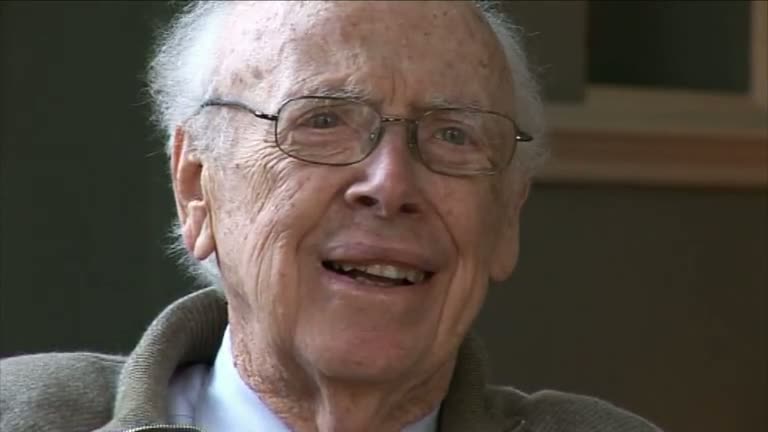NEXT STORY

Collaboration and competition
RELATED STORIES

NEXT STORY

Collaboration and competition
RELATED STORIES


|
Views | Duration | |
|---|---|---|---|
| 31. Telling people about our discovery | 137 | 05:54 | |
| 32. Rosalind Franklin's rapid acceptance of the double helix | 270 | 05:48 | |
| 33. Writing The Double Helix | 135 | 05:42 | |
| 34. Controversies surrounding The Double Helix | 105 | 05:42 | |
| 35. The film of the book | 132 | 05:19 | |
| 36. Not trying to win a Nobel Prize | 77 | 01:08 | |
| 37. The Double Helix and Cambridge | 173 | 04:54 | |
| 38. Going to Caltech and working on RNA | 155 | 05:31 | |
| 39. The RNA Tie Club | 137 | 03:01 | |
| 40. Collaboration and competition | 130 | 03:26 |


You know, Sydney described one or I forget... Sydney had the nonsense code answer for chain termination and Mario Capecchi, you know, guessed that in my lab we worked out nonsense suppression of them, so we were also competing with Fritz Lipmann lab at the Rockefeller, you know, trying to understand protein synthesis, about equal.
[Q] And the Tie Club? Was that tying everybody together?
Oh, that was much earlier.
[Q] That was dead by then.
That was the early period where the secret of life might lie in the structure of RNA and we would tell us all amino acids are lined up in proteins and it didn't at all. So the Tie Club was just a diversion from boredom when science isn't moving forward at all. It was my idea and then encouraged by Leslie Orgel, but then, when George Gamow saw it, it was he who made had the ties made, it was he who had the stationery, it was he who chose the members. So the Tie Club was, you know, a sort of one second idea of mine, you know, that you need clubs or occasions when people are forced to come together. I think that was the idea, that we were that you bring two people together who have sort of stopped thinking about what they should do next because they don't know what to do next and, if you start talking about what to do next, then it makes you think.
So I think that's why I find you know, I never think if I'm by myself. I might think if I'm, you know, reading a newspaper then a fact will come into your head, so something has to challenge you. If you're just left without anything new entering it, it's so easy to get into a rut, and so very easy to get into a rut, and it's something that's very hard to explain that even the brightest people for the most point are doing nothing, you know. One idea a year is really great if you think about it, you know, an idea which leads to an experiment, which changes the way you think about something. You're very lucky. Most years you do experiments but your fundamental ideas don't change.
American molecular biologist James Dewey Watson was best known for discovering the structure of DNA for which he was jointly awarded the 1962 Nobel Prize in Physiology or Medicine along with Francis Crick and Maurice Wilkins. His long career saw him teaching at Harvard and Caltech, and taking over the directorship of Cold Spring Harbor Laboratory in New York. From 1988 to 1992, James Watson was head of the Human Genome Project at the National Institutes of Health.
Title: The RNA Tie Club
Listeners: Martin Raff Walter Gratzer
Martin Raff is a Canadian-born neurologist and research biologist who has made important contributions to immunology and cell development. He has a special interest in apoptosis, the phenomenon of cell death.
Walter Gratzer is Emeritus Professor of Biophysical Chemistry at King's College London, and was for most of his research career a member of the scientific staff of the Medical Research Council. He is the author of several books on popular science. He was a Postdoctoral Fellow at Harvard and has known Jim Watson since that time
Tags: Sydney Brenner, Mario Capecchi, Fritz Lipmann, Leslie Orgel, George Gamow
Duration: 3 minutes, 1 second
Date story recorded: November 2008 and October 2009
Date story went live: 18 June 2010